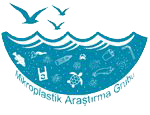Determination of Microplastic Pollution Levels in Some Natural Lakes Located in the South Aegean and Western Mediterranean Regions
Within the scope of the project, water, sediment and fish sampling will be carried out in these determined aquatic environments for two years, twice a year.Project Managers: Prof. Dr. Sedat Gündoğdu, Dr. Vedat Yeğen, Dr. Soner Çetinkaya
Project Institution/Organizations: Çukurova University Faculty of Fisheries, Eğirdir Fisheries Research Institute (SAREM), Mediterranean Fisheries Research, Production and Training Institute (AKSAM)
Project Summary: While studies on the subject are increasing in both freshwater and seas worldwide, there are limited studies on inland waters in our country. Therefore, this project will reveal the current status of microplastics in some natural lakes of Turkey. For this purpose, 12 lakes of various sizes and depths located in the South Aegean and Western Mediterranean regions (Beyşehir, Eğirdir, Kovada, Gölcük, Burdur, Çivril (Işıklı), Salda, Karataş, Yazır, Avlan, Köyceğiz and Bafa) will be investigated for microplastic pollution. This study has a unique value as it is the first study to be conducted in these lakes.
Within the scope of the project, water, sediment and fish sampling will be carried out in these determined aquatic environments for two years, twice a year. In the study, water samples will be collected with 15-minute trawls using a manta net with a 330 micron mesh size, and the material collected in the net’s collector will be transported to the laboratory for analysis. Sediment samples will be taken with a Van Veen Grab and a 500 gr sub-sample will be taken from the sample. Fish sampling will be carried out using gillnets, seines, fish and crayfish traps.
Considering human activities (agriculture, tourism, industry, recreation etc.) in the area covering lakes that represent a large area of our country and each have their own unique characteristics, the levels of microplastic amounts between the lakes and the differences between them will be determined. The obtained information will be shared with decision-making mechanisms and the public to raise social and managerial awareness about the status of microplastic pollution. Considering the scope and study area, this study is a unique study that can also be a reference for future studies.

Bize Ulaş
